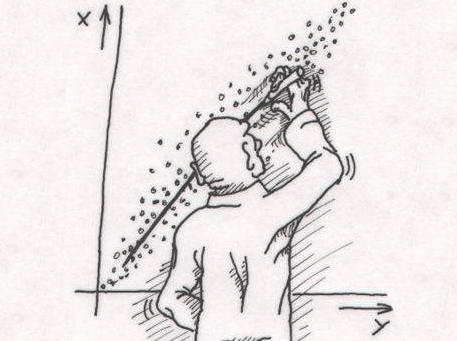 Quantitative trading is a technology based investment strategy that uses mathematical properties and logical computations to isolate opportunities in financial markets. Traditionally used by hedge funds and mutual funds, it is also now used by individual investors. quantitative trading is basically the opposite to qualitative trading ,which bases its strategy on human insight and analysis in investment decisions. In essence the true ability behind these models comes from software that tracks patterns and trends in trading behavior. To be a security trend there must be behavior patterns uncovered in price and volume of a trade in an upward or downward cycle. The software looks for patterns in stocks by separating trending vs. non trending behaviors. Investment opportunities are sought after when prices are affected by these periods. It also uses historical data as well as patterns and trends. The main objective in using a quantitative trading models is to reveal an opportunity of a under priced security, stock or bond. The results would lead any type of investor to examine the results and decide whether to buy or sell. Quantitative trading models are also used to identify risks. The subtlety, ability and detail that these programs posses to monitor these trends and patterns is another differentiating factor when compared to human analysis and strategy. Qualitative trading lacks this distinct detail as these behaviors are for the most part not possible to catch by human analysis and certainly not in the same time period. That is not to say that there isn't human involvement because there is in fact a human component. An financial analyst must still then take this data and research and test. Now back to the software the powers this ability. Trading models do vary and they are as distinct as the person who designs them. Trading models are built with scientific elements in mind which starts off with a development of a hypotheses. A theory must be outlined that is believed to be profitable and a logical statement must be made that compares a relationship. Next a database must be built in order to prove or disprove a hypotheses. Data that has several variables and data points will yield a better statistical perspective. Observations must then be made and the data that you have which is raw then must be organized and aggregated in a time based database. Next you must make calculations on the data by taking an observation and hypothesis and testing them using calculations and formulas. Then you are ready to define a trading rule for a program from previous calculations. Once ready you back test your trading rule to find out if you can profit with simulation testing which determines whether or not your model can make money and if it can be traded. Some quantitative trading models fail in that they are not thoroughly back tested, need additional development or have issues with invalid analysis. Other issues stem from excess data mining and poorly researched historical factors. The most popular quantitative model trading systems are of course the most profitable. Thorough research and analysis must be performed in order to ensure success. The best firms for quantitative trading models hire talent that fully understand return on capital, can perform strategy that is built to be current and consistently profitable, have a proven track record with not just back test data and also experience at a top hedge fund or bank institution.
|

|
|
|
|